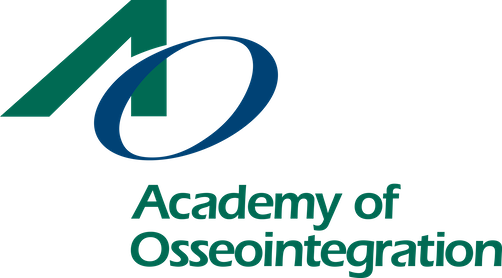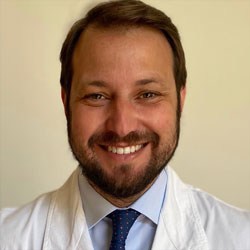-
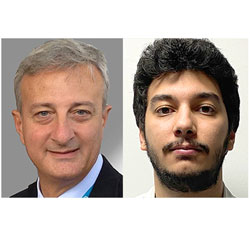 Giacomo Oteri, DDS, MD and Matteo Peditto, DDS, PhD, MSc More and more frequently, the oral surgeon uses analogic and digital diagnostic tools and workflows to perform oral and implant surgery procedures Does the use of these technologies always improve the precision of interventions, reducing morbidity and invasiveness? The current advantages and limitations of analogic and / or digital pathways in various clinical applications will be shown. Recorded - October 11, 2022
Giacomo Oteri, DDS, MD and Matteo Peditto, DDS, PhD, MSc More and more frequently, the oral surgeon uses analogic and digital diagnostic tools and workflows to perform oral and implant surgery procedures Does the use of these technologies always improve the precision of interventions, reducing morbidity and invasiveness? The current advantages and limitations of analogic and / or digital pathways in various clinical applications will be shown. Recorded - October 11, 2022 -
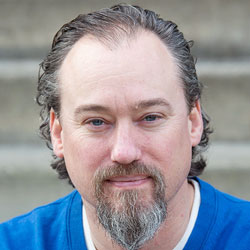 Cory Roletto, MBA This course will cover the most recent changes in online marketing and provide the components needed to create a comprehensive marketing strategy for both existing practices or start-ups. You will learn the key items to implement, how they work, and how to measure success. In this session we will discuss changes in Google’s algorithm, website optimization, social media, accessibility, and ways you can optimize your website to generate new patients. Recorded - March 23, 2022
Cory Roletto, MBA This course will cover the most recent changes in online marketing and provide the components needed to create a comprehensive marketing strategy for both existing practices or start-ups. You will learn the key items to implement, how they work, and how to measure success. In this session we will discuss changes in Google’s algorithm, website optimization, social media, accessibility, and ways you can optimize your website to generate new patients. Recorded - March 23, 2022 -
 Pablo Galindo-Moreno, DDS, PhD This presentation will be focused on those surgical factors that are easier and more predictable maxillary sinus floor techniques.How these factors influence the consolidation of the graft used, prevent accidents and complications of these techniques and increase the long-term survival of implants placed in this location will be addressed. The choice of biomaterial suitable for these techniques will be discussed. Recorded - December 1, 2022
Pablo Galindo-Moreno, DDS, PhD This presentation will be focused on those surgical factors that are easier and more predictable maxillary sinus floor techniques.How these factors influence the consolidation of the graft used, prevent accidents and complications of these techniques and increase the long-term survival of implants placed in this location will be addressed. The choice of biomaterial suitable for these techniques will be discussed. Recorded - December 1, 2022 -
 Joseph Fiorellini, DMD, DMSc The clinician has multiple decisions when treatment planning for a compromised dentition. The evaluation of teeth for retention or extraction can involve factors including bone volume, extent of periodontal bone loss and restorability. The balance of these factors will enhance the predictably of the implants in the compromised dentition. Recorded - January 22, 2022
Joseph Fiorellini, DMD, DMSc The clinician has multiple decisions when treatment planning for a compromised dentition. The evaluation of teeth for retention or extraction can involve factors including bone volume, extent of periodontal bone loss and restorability. The balance of these factors will enhance the predictably of the implants in the compromised dentition. Recorded - January 22, 2022 -
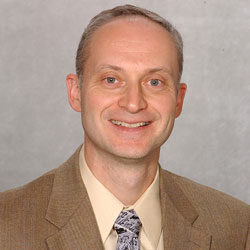 Len Tolstunov, DDS, DMD This presentation will discuss implant success and failure from the holistic approach and biologic balance that always exists between local and systemic factors. Loss of this balance and deterioration of key local factors and systemic condition will inevitably lead to a peri-implant bone loss and peri-implantitis. Surgical and some prosthetic considerations in implant failures will be discussed and clinical indices of implant success will be reviewed. Case presentations will help to review apical and marginal peri-implantitis. Inflammatory nature of peri-implantitis will be compared with non-inflammatory condition that can be classified as “peri-implantosis”. Treatment of peri-implantitis will be presented. Implant success will be defined as a dynamic process related to host’s health, as well as local factors, including bone and soft tissue quality around implant, implant design, and maintenance protocols. Finally, biologic principles of implant success at the time of implant placement and with age will be suggested. Recorded - January 19, 2022
Len Tolstunov, DDS, DMD This presentation will discuss implant success and failure from the holistic approach and biologic balance that always exists between local and systemic factors. Loss of this balance and deterioration of key local factors and systemic condition will inevitably lead to a peri-implant bone loss and peri-implantitis. Surgical and some prosthetic considerations in implant failures will be discussed and clinical indices of implant success will be reviewed. Case presentations will help to review apical and marginal peri-implantitis. Inflammatory nature of peri-implantitis will be compared with non-inflammatory condition that can be classified as “peri-implantosis”. Treatment of peri-implantitis will be presented. Implant success will be defined as a dynamic process related to host’s health, as well as local factors, including bone and soft tissue quality around implant, implant design, and maintenance protocols. Finally, biologic principles of implant success at the time of implant placement and with age will be suggested. Recorded - January 19, 2022 -
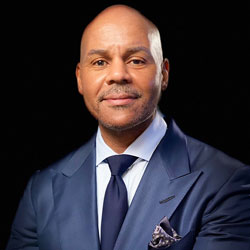 Richard Martin, DDS Collapse of the buccopalatal dimension of an extraction socket in implant dentistry is a known sequela. Multiple ridge preservation techniques to include bone and soft tissue grafting have been utilized over the years, Although these techniques can be successful, loss of buccal contour is a common finding even after 1 year in function. Ultimately this can lead the hygiene compromise and periimplantitis. Partial extraction therapy (PET) (socket shield, pontic shield and root submergence), specifically the socket shield is a technique aimed at addressing this collapse. The success of the procedure is due to intentional retention of small fragment of buccal root attached the bone. This root attachment has been shown to maintain the periodontal ligament (PDL)j and blood supply and as result the thin bundle bone. Utilization if the PET in full arch implant reconstruction has shown to be effective. Recorded - October 18, 2022
Richard Martin, DDS Collapse of the buccopalatal dimension of an extraction socket in implant dentistry is a known sequela. Multiple ridge preservation techniques to include bone and soft tissue grafting have been utilized over the years, Although these techniques can be successful, loss of buccal contour is a common finding even after 1 year in function. Ultimately this can lead the hygiene compromise and periimplantitis. Partial extraction therapy (PET) (socket shield, pontic shield and root submergence), specifically the socket shield is a technique aimed at addressing this collapse. The success of the procedure is due to intentional retention of small fragment of buccal root attached the bone. This root attachment has been shown to maintain the periodontal ligament (PDL)j and blood supply and as result the thin bundle bone. Utilization if the PET in full arch implant reconstruction has shown to be effective. Recorded - October 18, 2022 -
 Rand Harlow, DDS Maxillary anterior single tooth implant therapy can be challenging on multiple levels. Patients are becoming more demanding with their esthetic expectations. Achieving optimal esthetic outcomes requires an understanding of hard and soft tissue relationships, digital workflows and dental materials. This presentation will explore multiple considerations from diagnosis and treatment planning to treatment execution, in order to achieve acceptable esthetic results for maxillary implant surgery and restoration. Recorded - September 15, 2022
Rand Harlow, DDS Maxillary anterior single tooth implant therapy can be challenging on multiple levels. Patients are becoming more demanding with their esthetic expectations. Achieving optimal esthetic outcomes requires an understanding of hard and soft tissue relationships, digital workflows and dental materials. This presentation will explore multiple considerations from diagnosis and treatment planning to treatment execution, in order to achieve acceptable esthetic results for maxillary implant surgery and restoration. Recorded - September 15, 2022 -
 Prof. Dr. Tobias Fretwurst What if our therapies were as precise as Netflix recommendations? What sounds like the future is becoming increasingly commonplace in many areas of medicine. In this talk, Dr. Fretwurst will explain in simple terms what is meant by precision medicine and discuss its immense potential. Then he will showcase how his work group is already making use of this so-called personalized medicine in the field of implant dentistry. How can precision medicine be applied, for example, in grafting surgery? Can it revolutionize peri-implantitis diagnosis? What are the current limitations? Recorded - July 12, 2023
Prof. Dr. Tobias Fretwurst What if our therapies were as precise as Netflix recommendations? What sounds like the future is becoming increasingly commonplace in many areas of medicine. In this talk, Dr. Fretwurst will explain in simple terms what is meant by precision medicine and discuss its immense potential. Then he will showcase how his work group is already making use of this so-called personalized medicine in the field of implant dentistry. How can precision medicine be applied, for example, in grafting surgery? Can it revolutionize peri-implantitis diagnosis? What are the current limitations? Recorded - July 12, 2023 -
 Lambert Stumpel, DDS The restorative materials that are used for all on four implant fixed prosthesis vary between PMMA, composite, translucent and high strength Zirconia. Most need internal reinforcement to function successfully in the oral environment. Historically support consisted of a cast gold bar, in recent years CAD/CAM milled titanium has been popularized. Today yet another support system has been developed. It allows the fabrication of a metal bar in about 20-30 minutes, at a fraction of the cost of current CAD/CAM bars. This presentation will show how a prefabricated modular system, when combined with modern printing and milling techniques, allows the fabrication of a final prosthesis near time of implant placement. Recorded – February 25, 2023
Lambert Stumpel, DDS The restorative materials that are used for all on four implant fixed prosthesis vary between PMMA, composite, translucent and high strength Zirconia. Most need internal reinforcement to function successfully in the oral environment. Historically support consisted of a cast gold bar, in recent years CAD/CAM milled titanium has been popularized. Today yet another support system has been developed. It allows the fabrication of a metal bar in about 20-30 minutes, at a fraction of the cost of current CAD/CAM bars. This presentation will show how a prefabricated modular system, when combined with modern printing and milling techniques, allows the fabrication of a final prosthesis near time of implant placement. Recorded – February 25, 2023 -
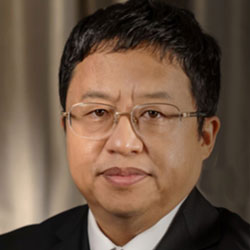 Haiyang Yu, PhD, DDS In implant surgery, a good linear guiding accuracy can be realized by static template, but it is still less than 1mm. Such accuracy, not as high as expected, can be attributed to the lack of physical measurement during the surgery. Physical measurement is an effective way to manage the implant error within the acceptable limits. Although periodontal probe is wildly used, it is not an appropriate measuring tool for implant surgery which requires accuracy less than 1mm. In order to ensure the implant accuracy, it is necessary to measure and check the crown-root ratio and angle of implants as well as the distance between implants and adjacent teeth by special measuring tools with less-than-1mm accuracy at each interoperative step. This presentation will review the evolution of the guiding methods of implant surgery and the accuracy of these methods, and elaborate on the significance and principle of interoperative physical-measurement through clinical cases. Recorded - May 19, 2022
Haiyang Yu, PhD, DDS In implant surgery, a good linear guiding accuracy can be realized by static template, but it is still less than 1mm. Such accuracy, not as high as expected, can be attributed to the lack of physical measurement during the surgery. Physical measurement is an effective way to manage the implant error within the acceptable limits. Although periodontal probe is wildly used, it is not an appropriate measuring tool for implant surgery which requires accuracy less than 1mm. In order to ensure the implant accuracy, it is necessary to measure and check the crown-root ratio and angle of implants as well as the distance between implants and adjacent teeth by special measuring tools with less-than-1mm accuracy at each interoperative step. This presentation will review the evolution of the guiding methods of implant surgery and the accuracy of these methods, and elaborate on the significance and principle of interoperative physical-measurement through clinical cases. Recorded - May 19, 2022 -
 Ueli Grunder, DMD Although we all prefer to talk about beautiful successes, it is usually more interesting to talk about complications. Even before a planned implantation in the esthetic zone, there may be problems that require a special intervention. During implant therapy, usually in combination with bone and soft tissue augmentation, undesirable complications can occur, especially in the way of poor healing, and finally, unsatisfactory results are seen after the end of the treatment, which may require re-treatment. In most cases, the complications manifest themselves quantitatively or qualitatively in the soft tissue. In this lecture we will discuss how to deal with certain complications. Unfortunately, only a few examples can be discussed within the scope of this lecture. Recorded - June 21, 2022
Ueli Grunder, DMD Although we all prefer to talk about beautiful successes, it is usually more interesting to talk about complications. Even before a planned implantation in the esthetic zone, there may be problems that require a special intervention. During implant therapy, usually in combination with bone and soft tissue augmentation, undesirable complications can occur, especially in the way of poor healing, and finally, unsatisfactory results are seen after the end of the treatment, which may require re-treatment. In most cases, the complications manifest themselves quantitatively or qualitatively in the soft tissue. In this lecture we will discuss how to deal with certain complications. Unfortunately, only a few examples can be discussed within the scope of this lecture. Recorded - June 21, 2022 -
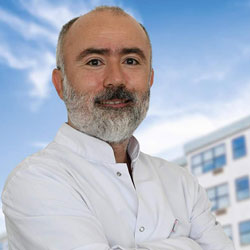 Guney Yilmaz, DDS, PhD In this presentation, detailed information regarding the surgical use of preferred hard and soft tissue lasers for periodontal treatments and implantology is going to be shared. In order to make effective use of lasers in dentistry, the basic physical principles and technical properties of lasers are going to be highlighted. Subsequently, the basics of using hard and soft tissue lasers in periodontal surgery are going to explained as well as how clinicians can benefit from these devices in implantology will be illustrated using cases. Recorded - October 20, 2022
Guney Yilmaz, DDS, PhD In this presentation, detailed information regarding the surgical use of preferred hard and soft tissue lasers for periodontal treatments and implantology is going to be shared. In order to make effective use of lasers in dentistry, the basic physical principles and technical properties of lasers are going to be highlighted. Subsequently, the basics of using hard and soft tissue lasers in periodontal surgery are going to explained as well as how clinicians can benefit from these devices in implantology will be illustrated using cases. Recorded - October 20, 2022 -
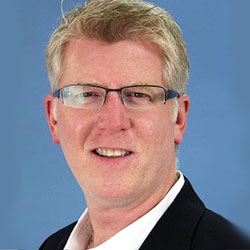 Lee Culp, CDT As dentistry evolves into the digital world, the successful incorporation of computerization and new technology will continue to provide more efficient methods of communication and fabrication while at the same time retaining the individual creativity and artistry of the skilled dentist and dental technician, while the utilization of new technology will continue to enhance the close cooperation and working relationship of the dentist/technician team. This presentation will offer participants a unique insight into digital design by creating a Virtual Patient by combining 3D Face Scanning, IOS and CT scans. Then using a combination of Diagnostic, Restorative, Orthodontic, Denture and Implant planning software for pre surgical planning to design, printed diagnostic wax-up and milled provisional PMMA restorations, and their digital replicas to guide us in the creation of cad-cam restorations, for both tooth and implant supported prosthetics. Recorded - February 5, 2022
Lee Culp, CDT As dentistry evolves into the digital world, the successful incorporation of computerization and new technology will continue to provide more efficient methods of communication and fabrication while at the same time retaining the individual creativity and artistry of the skilled dentist and dental technician, while the utilization of new technology will continue to enhance the close cooperation and working relationship of the dentist/technician team. This presentation will offer participants a unique insight into digital design by creating a Virtual Patient by combining 3D Face Scanning, IOS and CT scans. Then using a combination of Diagnostic, Restorative, Orthodontic, Denture and Implant planning software for pre surgical planning to design, printed diagnostic wax-up and milled provisional PMMA restorations, and their digital replicas to guide us in the creation of cad-cam restorations, for both tooth and implant supported prosthetics. Recorded - February 5, 2022 -
 Hsun-Liang Chan, DDS, MS Using the surgical microscope as a routine in the clinic for performing periodontal and implant procedures is beneficial! Increased magnification (10 to 25x) and confocal illumination make possible precise incision, soft tissue reflection and management, complete surface detoxification and detailed suturing. These delicate procedures can lead to improved wound stability and early revascularization, which could improve regenerative outcomes and reduce postoperative morbidity, as shown in the literature. This webinar will focus on the principles and rationale of using the surgical microscope for bone regenerative procedures. New insights into soft tissue evaluation for wound opening risk assessment, incision designs and wound closure techniques for predictable bone regeneration will be discussed. Recorded - April 13, 2022
Hsun-Liang Chan, DDS, MS Using the surgical microscope as a routine in the clinic for performing periodontal and implant procedures is beneficial! Increased magnification (10 to 25x) and confocal illumination make possible precise incision, soft tissue reflection and management, complete surface detoxification and detailed suturing. These delicate procedures can lead to improved wound stability and early revascularization, which could improve regenerative outcomes and reduce postoperative morbidity, as shown in the literature. This webinar will focus on the principles and rationale of using the surgical microscope for bone regenerative procedures. New insights into soft tissue evaluation for wound opening risk assessment, incision designs and wound closure techniques for predictable bone regeneration will be discussed. Recorded - April 13, 2022 -
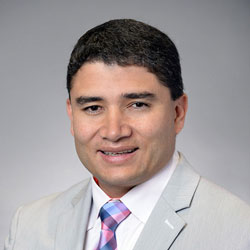 Emilio Arguello, DDS, MS This lecture will focus on the different models for successful management and integration of work-flows between a private practice versus a multi practice models. As well as the understanding of the common goals to maximize earning potential that can be achieved in both models from the practitioner’s point of view. Recorded - November 3, 2021
Emilio Arguello, DDS, MS This lecture will focus on the different models for successful management and integration of work-flows between a private practice versus a multi practice models. As well as the understanding of the common goals to maximize earning potential that can be achieved in both models from the practitioner’s point of view. Recorded - November 3, 2021 -
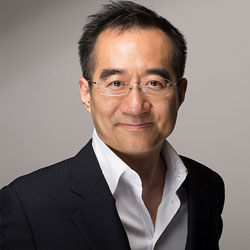 Joseph Kan, DDS, MS Esthetics immediate tooth replacement, a controversial, yet intriguing treatment concept conceived more than 25 ago. While the concept has evolved over time, numerous debates had been dedicated to its validity. Now, 25 years later, questions remain: Does it maintain gingival esthetics? Does it work as well as implant in healed sites? Is it a viable option after all ? This presentation will focus on pros and cons of esthetics immediate tooth replacement. More importantly, did we validate this procedure from lessons learned by mistakes made over the past 25 years. Recorded - November 12, 2022
Joseph Kan, DDS, MS Esthetics immediate tooth replacement, a controversial, yet intriguing treatment concept conceived more than 25 ago. While the concept has evolved over time, numerous debates had been dedicated to its validity. Now, 25 years later, questions remain: Does it maintain gingival esthetics? Does it work as well as implant in healed sites? Is it a viable option after all ? This presentation will focus on pros and cons of esthetics immediate tooth replacement. More importantly, did we validate this procedure from lessons learned by mistakes made over the past 25 years. Recorded - November 12, 2022 -
 Despoina Bompolaki, DDS, MS Dental implants have become a widely accepted, sought-after treatment option for replacing missing teeth. Favorable treatment outcomes depend on proper planning and execution, from both a restorative and a surgical perspective. This lecture will go well beyond the basics of restoring dental implants: achieving predictable esthetic outcomes when restoring anterior implants; capturing accurate impressions in multiple implant cases; identifying proper componentry for existing implants; recognizing and addressing common prosthetic complications; and most of all, supporting clinical decisions with scientific evidence. Recorded - November 20, 2021
Despoina Bompolaki, DDS, MS Dental implants have become a widely accepted, sought-after treatment option for replacing missing teeth. Favorable treatment outcomes depend on proper planning and execution, from both a restorative and a surgical perspective. This lecture will go well beyond the basics of restoring dental implants: achieving predictable esthetic outcomes when restoring anterior implants; capturing accurate impressions in multiple implant cases; identifying proper componentry for existing implants; recognizing and addressing common prosthetic complications; and most of all, supporting clinical decisions with scientific evidence. Recorded - November 20, 2021 -
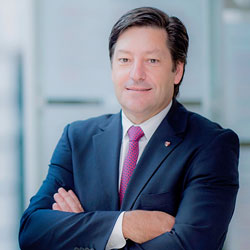 German Gallucci, DMD, PhD During this lecture, clinical considerations and indications for dental implants will be analyzed in the context of their direct application to esthetic implant-prosthetic rehabilitations. Risk assessment, treatment planning, surgical protocols and esthetic/prosthodontic rehabilitations will be discussed in detail according to different clinical situations. Recommended planning steps and treatment procedures will be presented through scientific evidence. Modern Implant-prosthetic restorations using different implant designs and digital technology call for a harmonious esthetic integration with the pre-existing environment. A scalloped gingival line with distinct papillae and free of any abrupt vertical differences in clinical crown length between anterior implants, is paramount. In this context, biologic considerations affecting normal peri-implant soft tissue integration will be discussed as a major esthetic parameter. Recorded - July 17, 2021
German Gallucci, DMD, PhD During this lecture, clinical considerations and indications for dental implants will be analyzed in the context of their direct application to esthetic implant-prosthetic rehabilitations. Risk assessment, treatment planning, surgical protocols and esthetic/prosthodontic rehabilitations will be discussed in detail according to different clinical situations. Recommended planning steps and treatment procedures will be presented through scientific evidence. Modern Implant-prosthetic restorations using different implant designs and digital technology call for a harmonious esthetic integration with the pre-existing environment. A scalloped gingival line with distinct papillae and free of any abrupt vertical differences in clinical crown length between anterior implants, is paramount. In this context, biologic considerations affecting normal peri-implant soft tissue integration will be discussed as a major esthetic parameter. Recorded - July 17, 2021 -
 Dan Holtzclaw, DDS, MS Although they have been in use for over 50 years, pterygoid dental implants are one of the least understood styles of dental implant treatment. This may be due to the fact that pterygoid implants are widely considered to be one of the most difficult fixtures to place in all of implant dentistry. In this webinar, Dr. Dan Holtzclaw details his experience utilizing pterygoid implant in hundreds of full arch immediate load cases. Recorded - September 1, 2021
Dan Holtzclaw, DDS, MS Although they have been in use for over 50 years, pterygoid dental implants are one of the least understood styles of dental implant treatment. This may be due to the fact that pterygoid implants are widely considered to be one of the most difficult fixtures to place in all of implant dentistry. In this webinar, Dr. Dan Holtzclaw details his experience utilizing pterygoid implant in hundreds of full arch immediate load cases. Recorded - September 1, 2021

